This delicious and easy-to-make baked salmon is seasoned with olive oil, garlic, and thyme. It only needs 15 minutes in a 425°F oven to emerge perfectly cooked, moist, and tender!
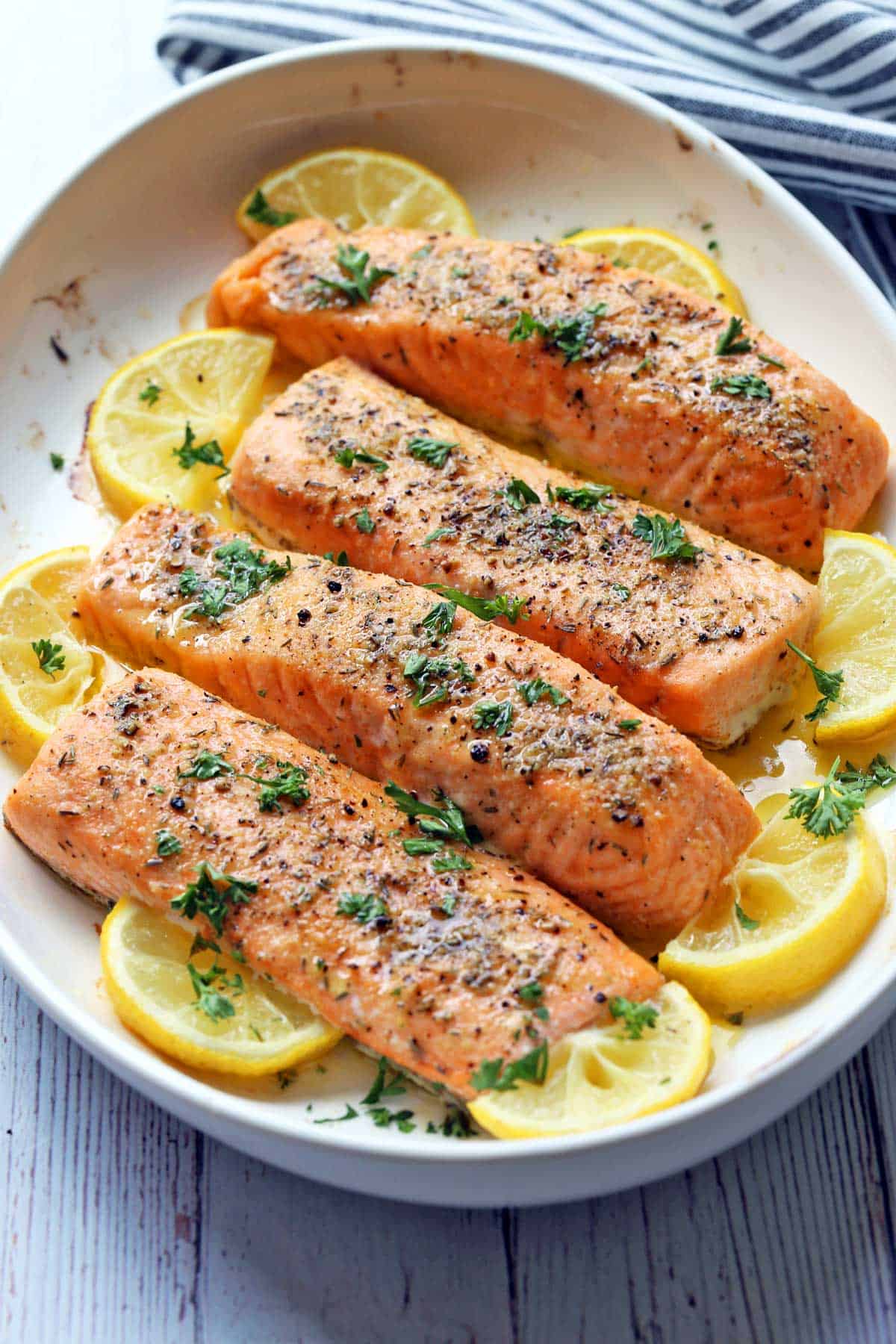
The only secret to perfectly baked salmon is to avoid drying it out. If you don't overcook it, you'll emerge from the kitchen with a delectable, tender fish that everyone will love. Whether I cook blackened salmon, teriyaki salmon, or paprika salmon, I always cook this fish to medium doneness - not a second longer!
Ingredients
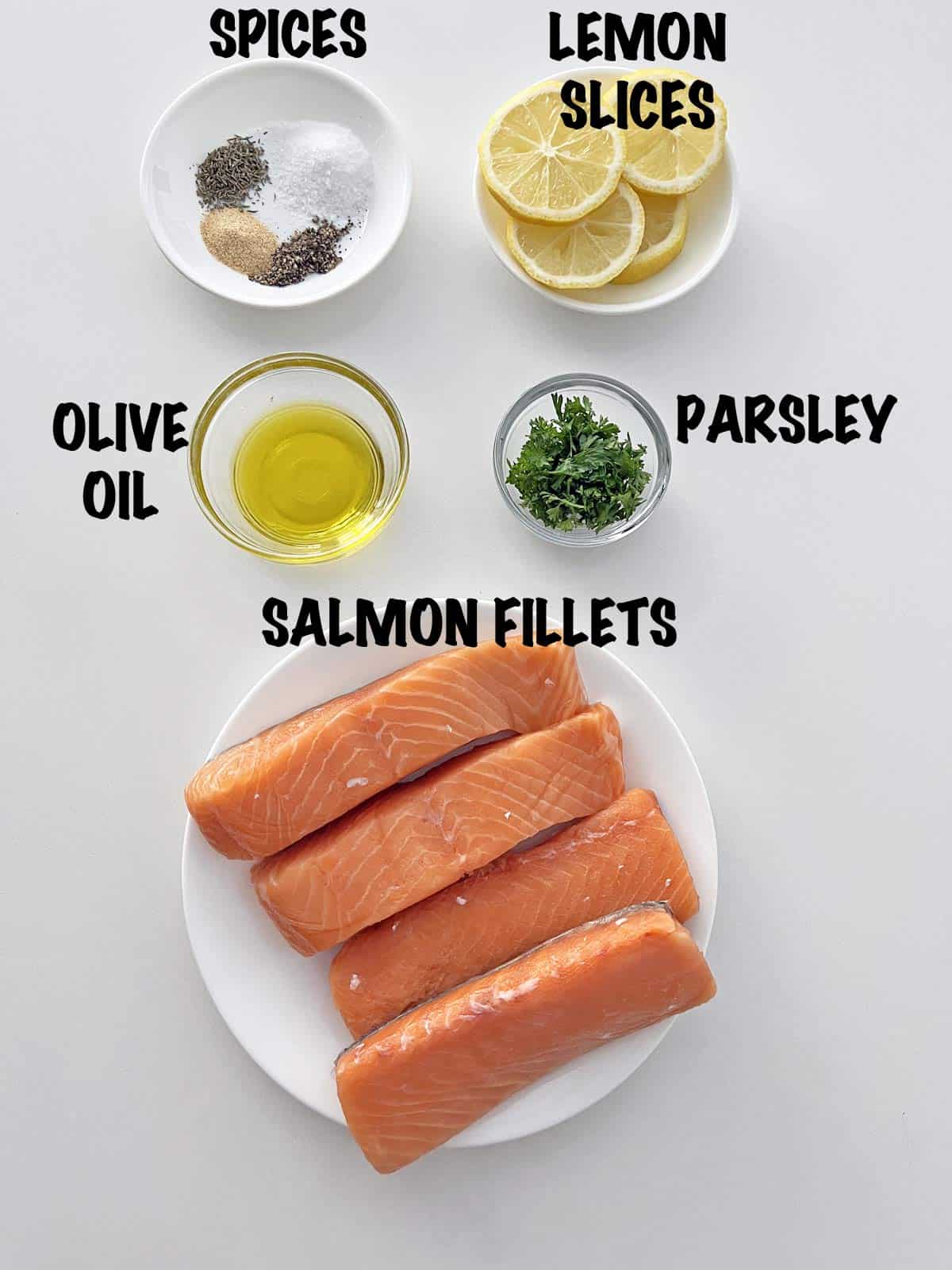
See the recipe card for exact measurements. Here are my comments on some of the ingredients.
- Salmon fillets: I use skin-on salmon. The skin is the best part! It also helps protect the fish from drying out.
- Olive oil: I use it to coat the fish before baking it.
- To season: Kosher salt, black pepper, garlic powder, and dried thyme. I prefer garlic powder to fresh minced garlic - it coats the fish more uniformly.
- Optional ingredients: I sometimes add lemon slices and bake them with the fish. I sometimes also top the finished dish with chopped parsley for a pretty garnish.
Variations
- Coat the salmon in melted butter or ghee instead of olive oil. I especially love using butter! It's delicious.
- Vary the spices you use. In addition to garlic and thyme, I sometimes add a generous pinch of onion powder and paprika. Ground cumin (just a pinch) is another tasty option. And in the photo below, the salmon was seasoned with salt, pepper, garlic powder, and chili powder. I served it with roasted broccolini.
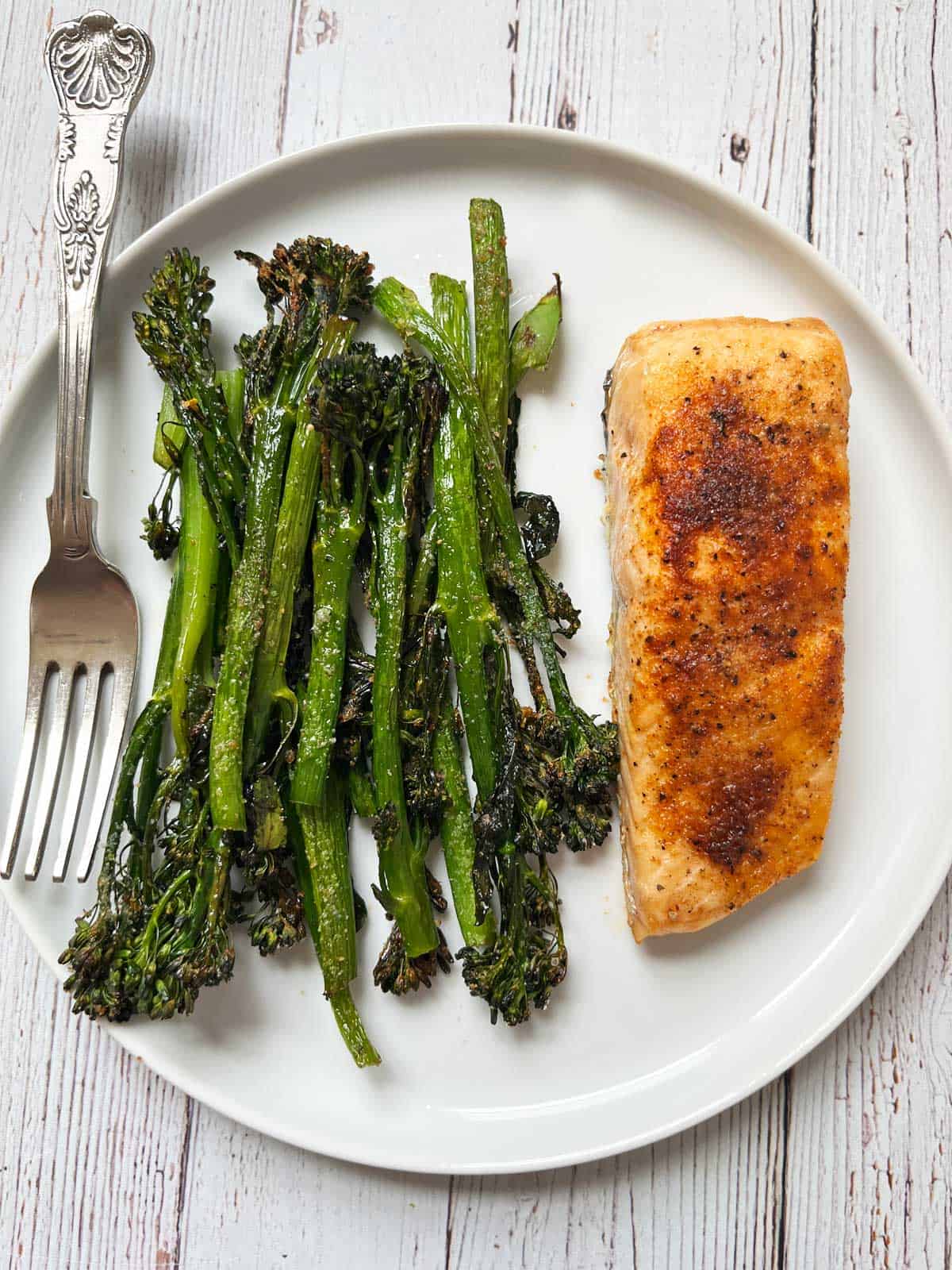
Instructions
This is such an easy recipe. The oven does all the work, and unlike baked white fish, there's less of a risk of the salmon drying out. The detailed instructions and step-by-step photos are included in the recipe card. Here's a quick overview.
Use a pastry brush to coat the salmon fillets with olive oil.
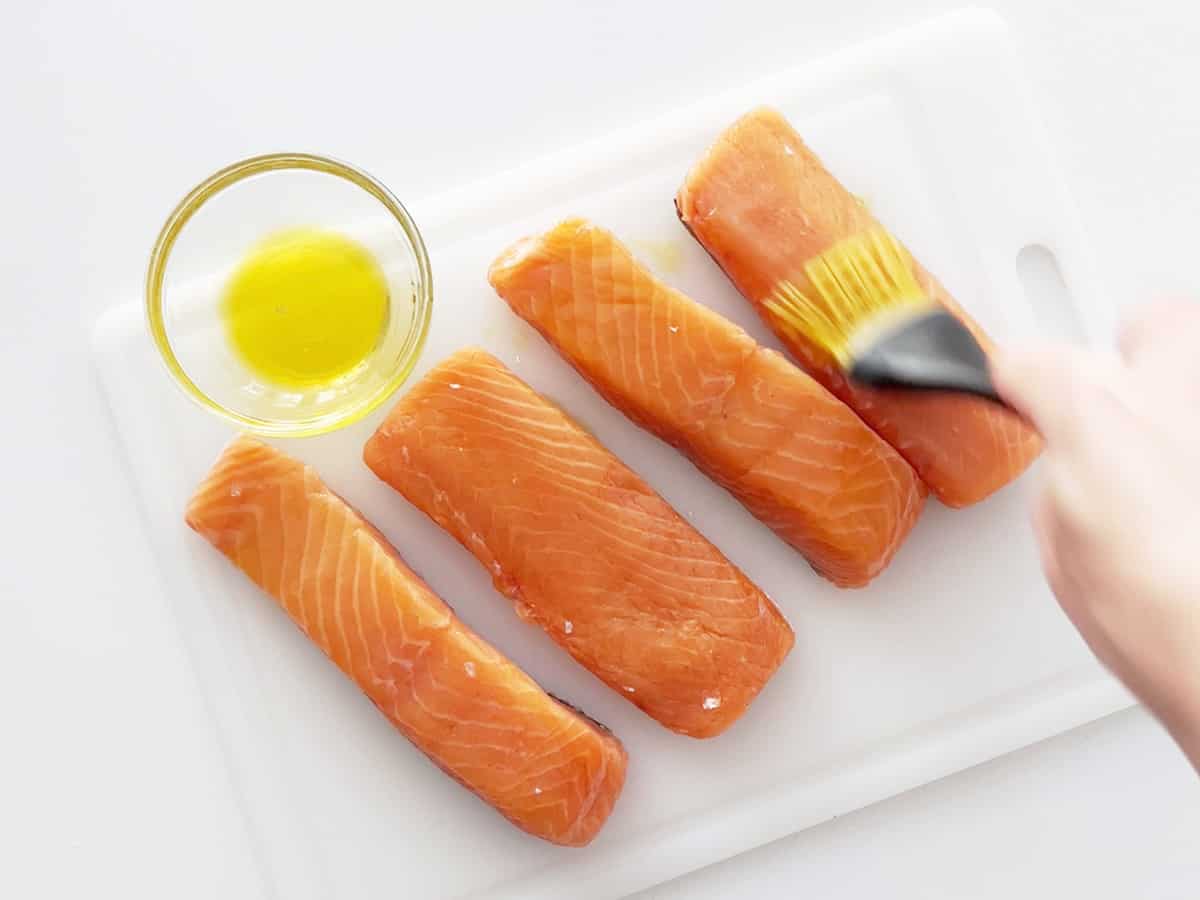
Sprinkle the salmon fillets with salt, pepper, and spices. Place them on a rimmed baking dish. If using, arrange lemon slices around them.
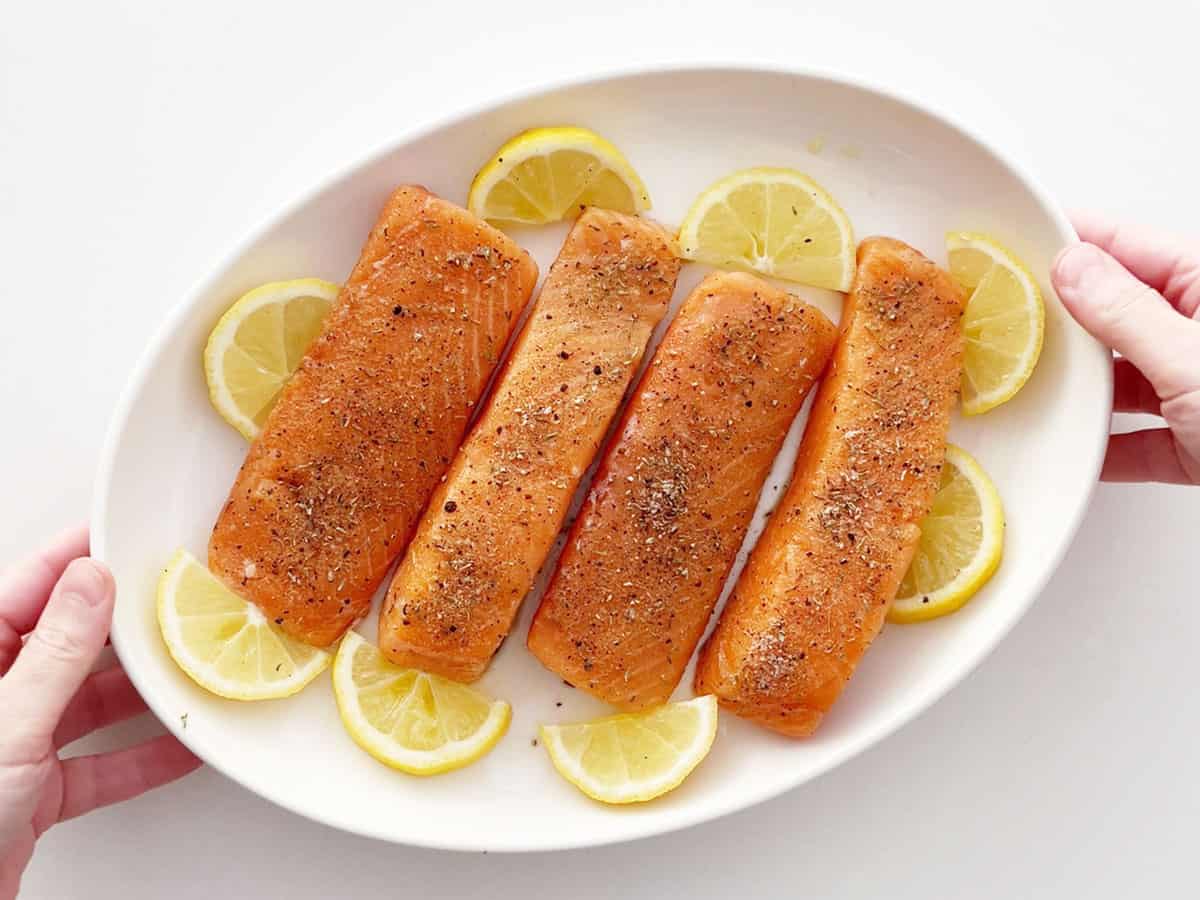
Bake the salmon until it's cooked through. Its internal temperature should reach 145°F. Garnish with parsley and serve.
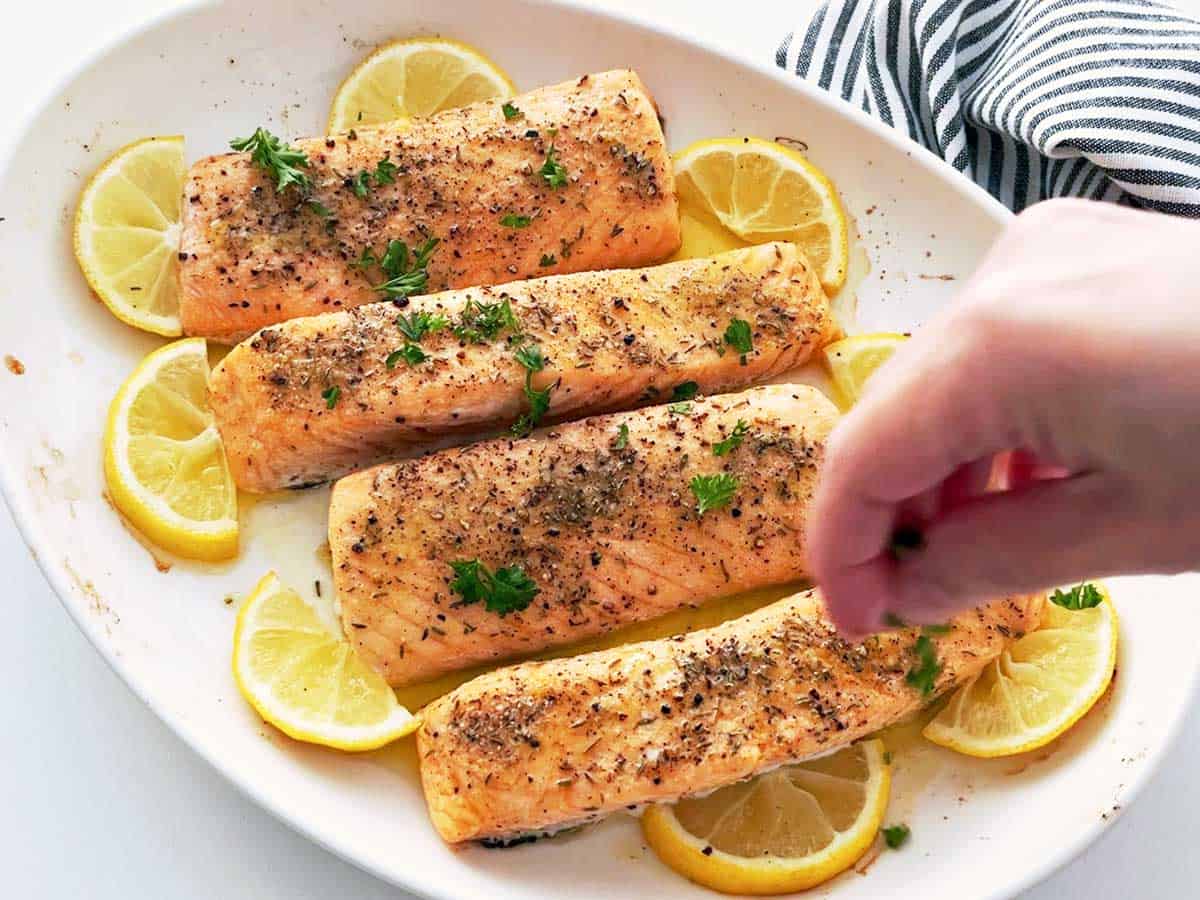
Excellent Recipe. I've always been afraid of cooking Salmon, but this was perfect on the first try. It tasted and looked appetizing as well.
Roy
Read more comments
Recipe Tip
According to the USDA, fish should be cooked medium (145°F). The best way to make sure the fish is done is to use an instant-read thermometer. If you don't have a thermometer, you can check with a fork. The center of each fillet should be opaque and flaky. If it's still translucent and resists being flaked with a fork, it's not done yet. Here's a photo that illustrates how the salmon should look on the inside when it's done:
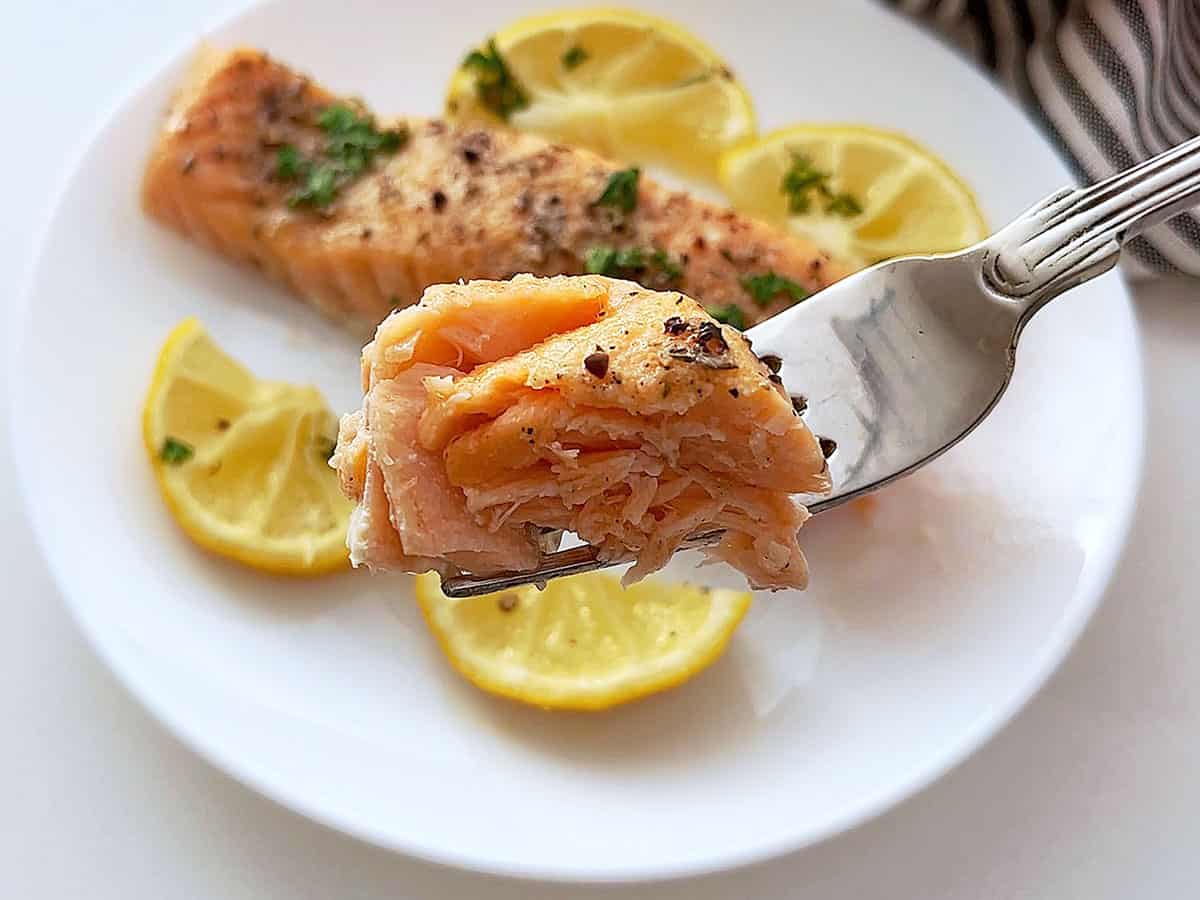
On the other hand, the salmon shown in the photos below is overcooked. See those white streaks? That's Albumin, which appears on salmon when it's overcooked. You can also see that the inside appears dry when it should be opaque but moist:
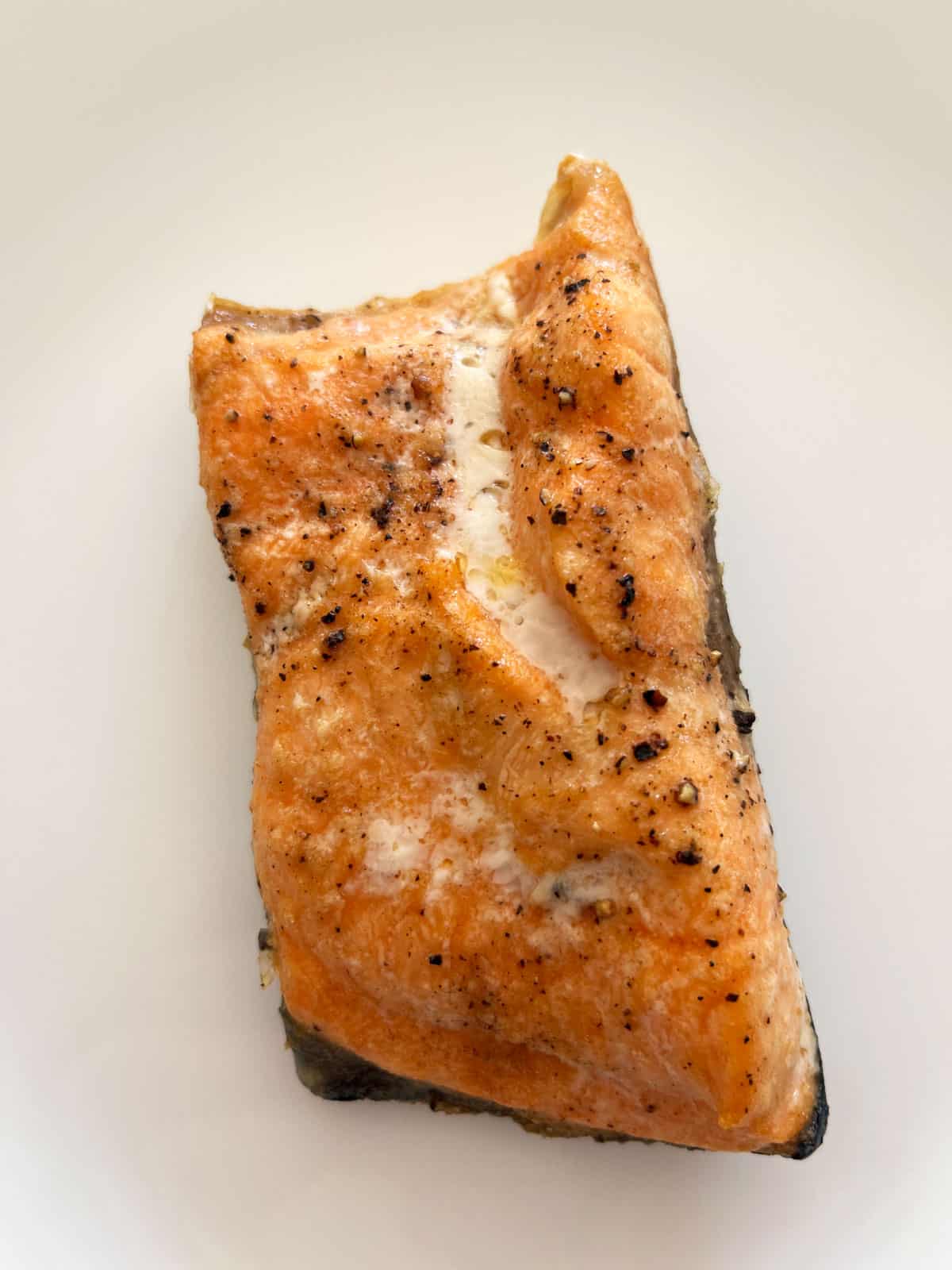
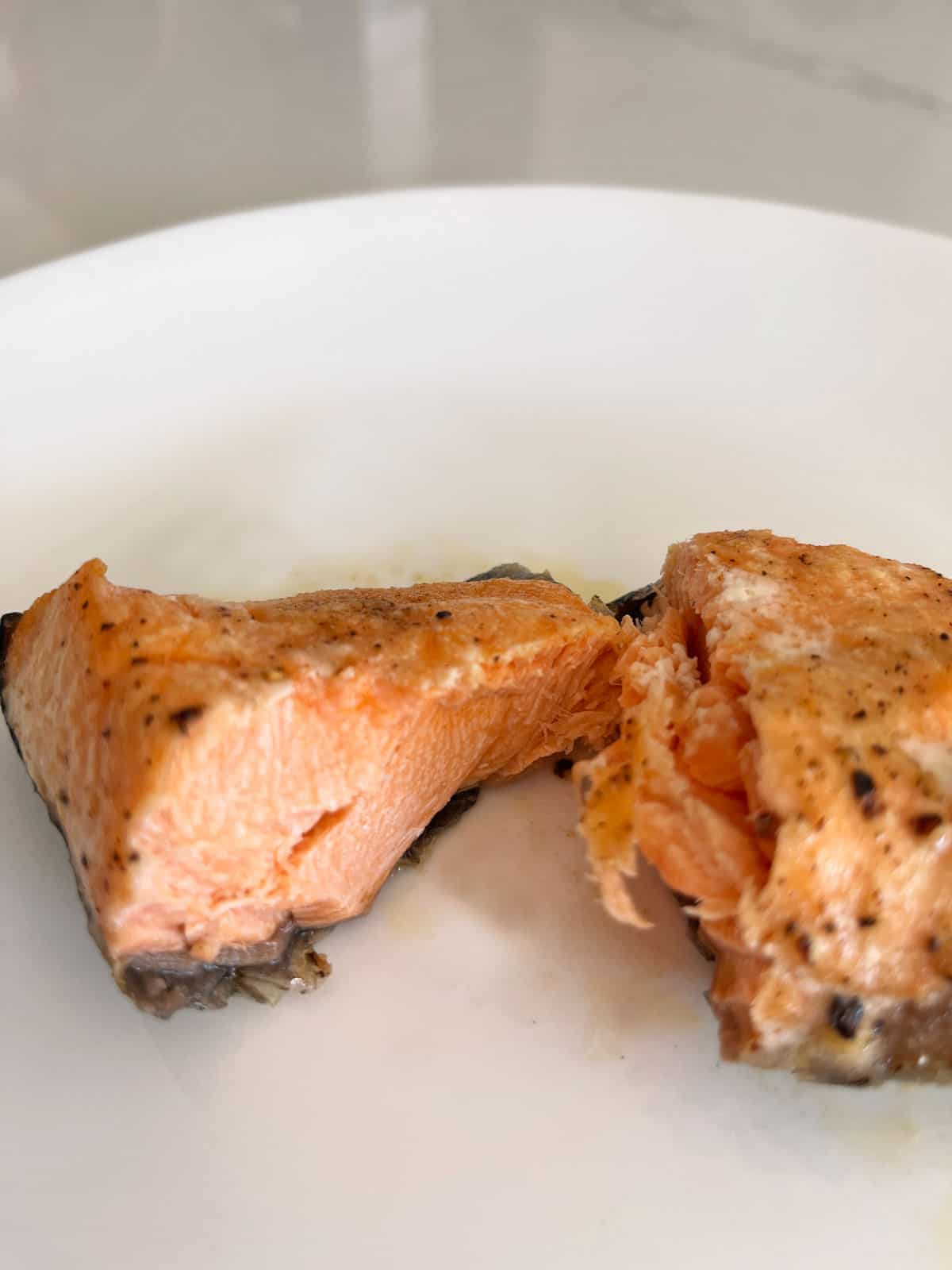
Recipe FAQs
For even cooking, it's best to cut a big chunk into individual, 6-ounce portions. It IS possible to bake a large piece, but then you risk the edges becoming overcooked while the middle is still raw.
This is a matter of personal preference. You can use either. I love salmon skin. It's fatty and delicious. So, I use skin-on salmon.
Yes. Simply increase the cooking time to about 20 minutes for 6-ounce fillets. In fact, baking fish from frozen often helps avoid drying them out. However, you should only do this with smaller, 6-ounce fillets. Bigger fillets could be undercooked in the middle if you cook them frozen.
When cooking from frozen, it's especially important to check for doneness with an instant-read thermometer or use a fork to ensure the center is opaque and flaky.
No. You should leave it uncovered. If you use foil, the salmon will steam instead of baking.
Serving Suggestions
Side Dishes
There are so many sides to choose from - this is a versatile main dish. But since I cook the salmon in a 425°F oven, I like to serve it with a side dish I can cook in the same oven, like roasted green beans, as shown in the photos below.
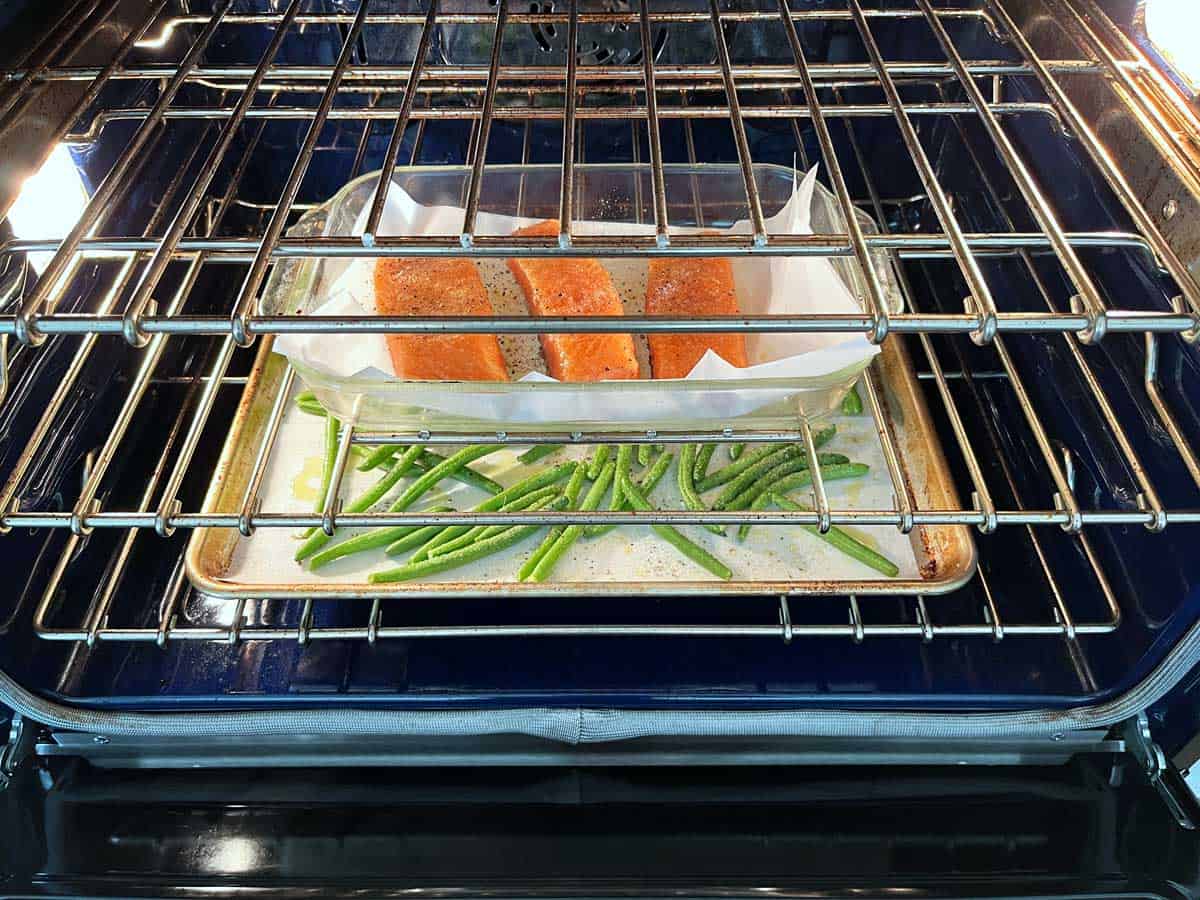
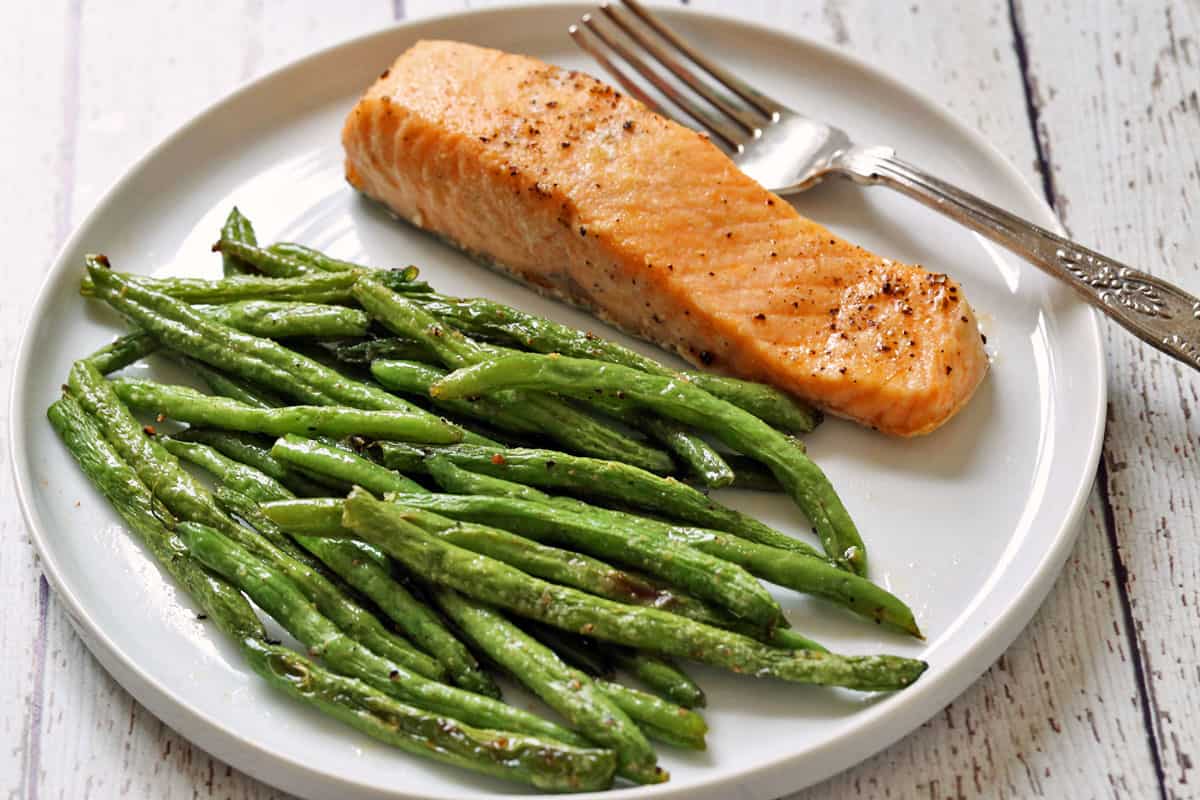
Other sides that I often pair with this main course:
- Roasted butternut squash
- Roasted mushrooms
- Cauliflower gratin
- Roasted fennel
- Roasted cherry tomatoes
- Roasted Brussels sprouts
- Roasted cauliflower, as shown in the photo below.
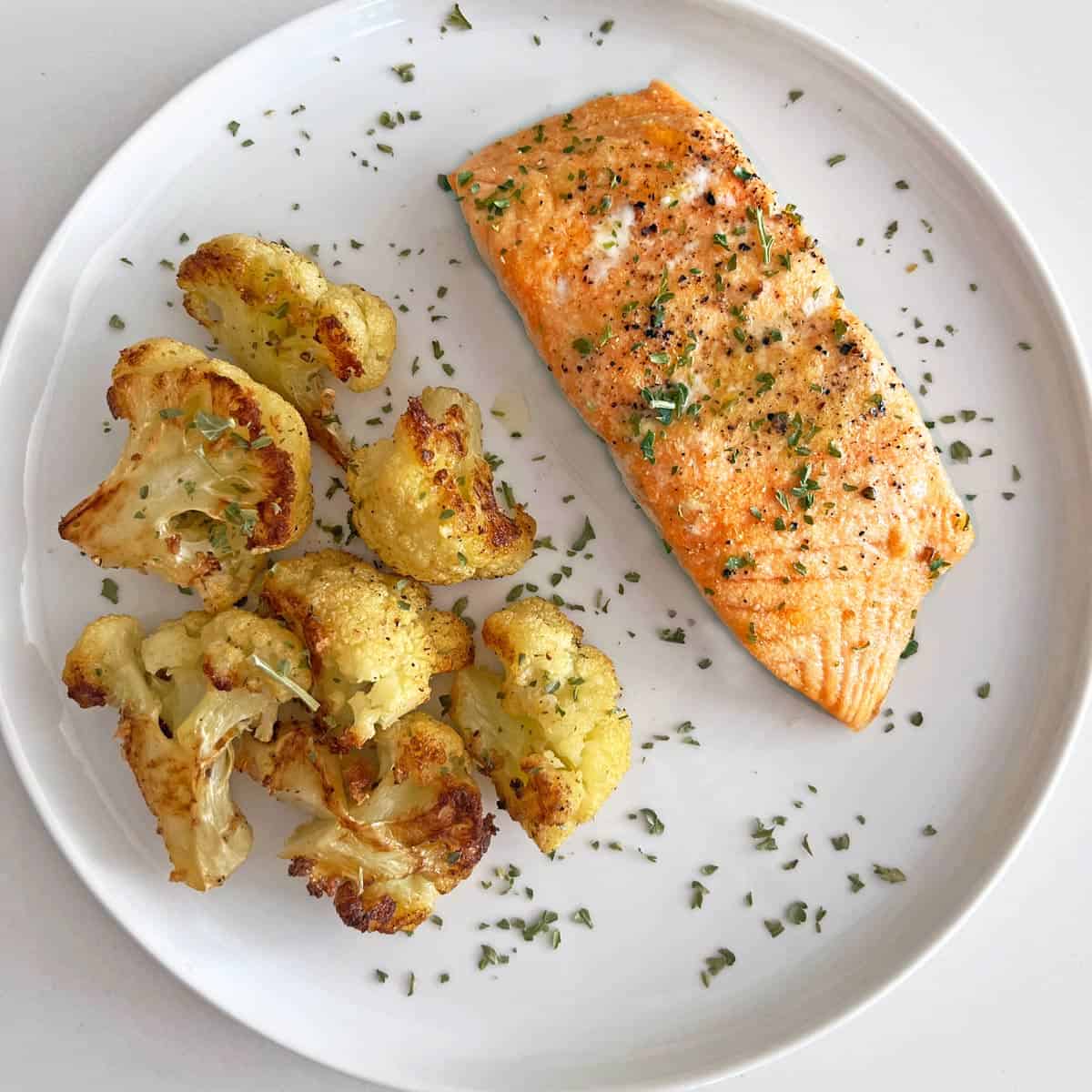
Sauce
I don't usually serve this salmon with a sauce. Unlike poached salmon, which has a mild flavor and can benefit from adding sauce, baked salmon is flavorful on its own, especially when cooked with the skin on and not overcooked.
However, when I make steamed asparagus, microwave asparagus, or roasted asparagus to go with this dish, I make hollandaise sauce to drizzle on both.
Storing and Using the Leftovers
You can keep the leftovers in an airtight container in the fridge for up to three days. I don't like reheating them - they become dry and fishy - so I flake them and use them cold as a salad topping the next day, as shown in the photo below. If you prefer to reheat the leftovers, do so very gently. Cover the fish and reheat it in the microwave at 50% power, turning often, until heated through.
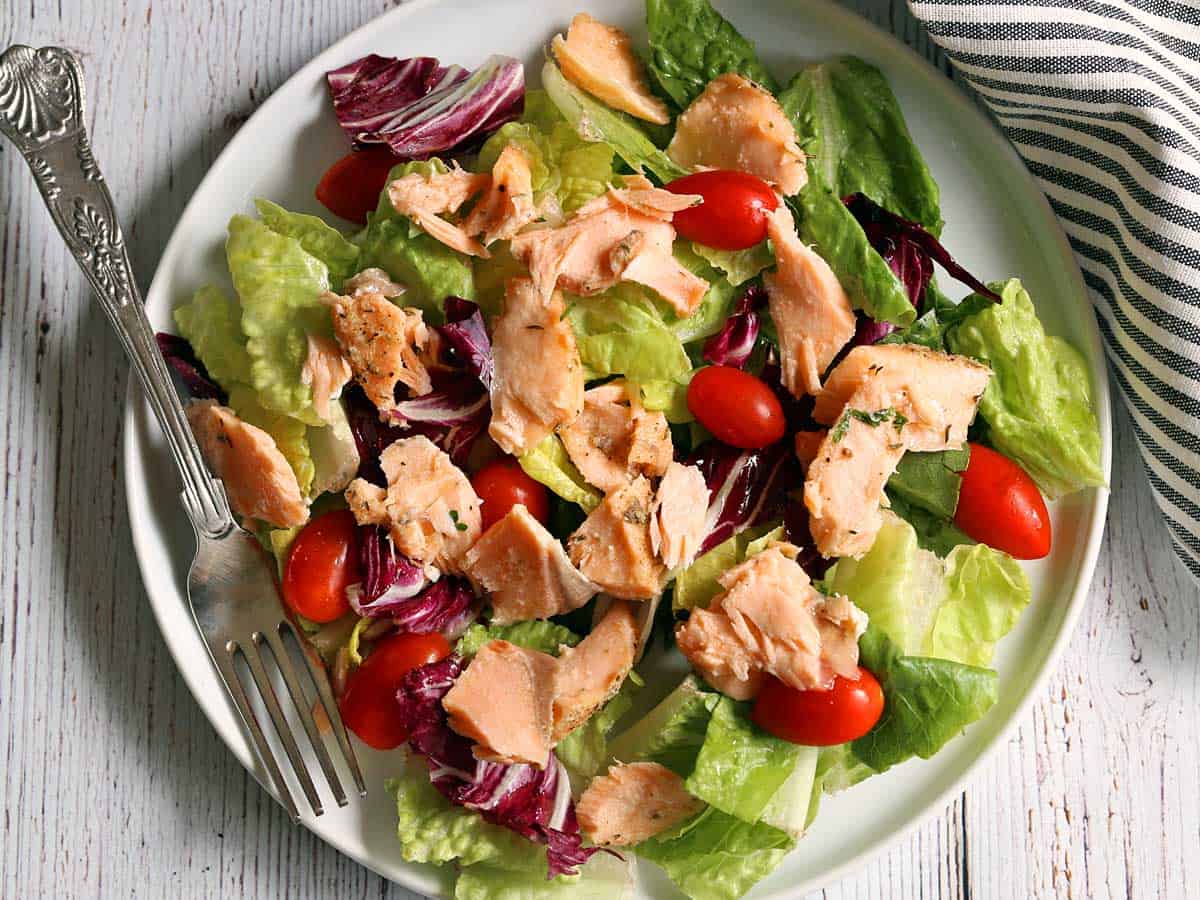
Recipe Card
15-Minute Baked Salmon
Video
Ingredients
- 4 salmon fillets - 6 ounces each, skin-on or skinless, about 1 inch thick, pin bones removed
- 2 tablespoons olive oil - extra-virgin
- 1 teaspoon Diamond Crystal kosher salt - or ½ teaspoon of any other salt, including Morton kosher salt
- ¼ teaspoon black pepper - freshly ground
- ½ teaspoon garlic powder
- ½ teaspoon dried thyme
Optional:
- 1 lemon - sliced and seeded
- 2 tablespoons parsley - chopped, for garnish
Instructions
- Preheat the oven to 425°F. Position a rack in the middle of the oven.
- Run your finger across the salmon fillets to check for bones. If your fish have bones in them, remove the bones with fish bone tweezers.
- Using a pastry brush or clean hands, coat the salmon fillets with olive oil.
- Sprinkle the salmon on both sides with kosher salt, black pepper, garlic powder, and thyme.
- Arrange the salmon fillets on the baking dish, skin side down. If using, arrange the lemon slices around the fish. Lightly brush the lemon slices with olive oil.
- Bake the salmon, uncovered, until it's opaque and cooked through and its internal temperature reaches 145°F. This should take around 15 minutes.
- Garnish with chopped parsley and serve.
Notes
- The USDA says that you should cook fish to medium (145°F). If you don't have a thermometer, you can check with a fork. The center of each fillet should be opaque and flaky. If it's still translucent and resists being flaked with a fork, it's not done yet.
- You can line the baking dish with nonstick foil to minimize the risk of sticking.
- To cook frozen salmon, increase the baking time to about 20 minutes for 6-ounce fillets. Baking fish from frozen often helps avoid drying them out. However, you should only do this with smaller, 6-ounce fillets. Bigger fillets could be undercooked in the middle if you cook them frozen. When cooking from frozen, it's especially important to check for doneness with an instant-read thermometer or use a fork to ensure the center is opaque and flaky.
- You can keep the leftovers in an airtight container in the fridge for up to 3 days. I don't like reheating them - they end up dry and fishy. So I flake them and use them cold as a salad topping the next day. If you prefer to reheat the leftovers, do so very gently. Cover the fish and reheat it in the microwave at 50% power, turning often, until heated through.
Nutrition per Serving
Save this Recipe!
We will also add you to our weekly newsletter. Unsubscribe anytime. See healthyrecipesblogs.com/privacy/ to learn how we use your email.
Disclaimers
Most recipes are low-carb and gluten-free, but some are not. Recommended and linked products are not guaranteed to be gluten-free. Nutrition info is approximate. Please verify it independently. The carb count excludes non-nutritive sweeteners. Please read these Terms of Use before using any of my recipes.

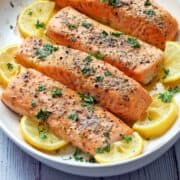
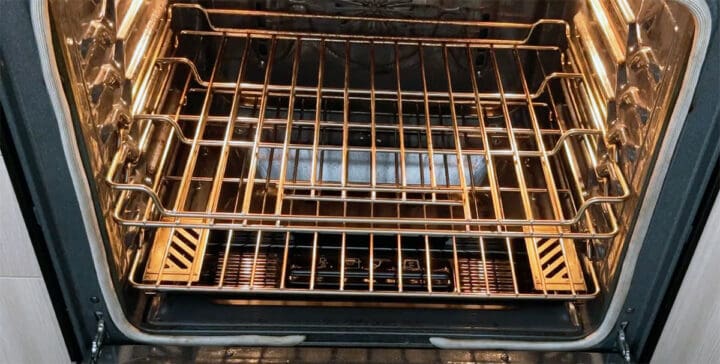
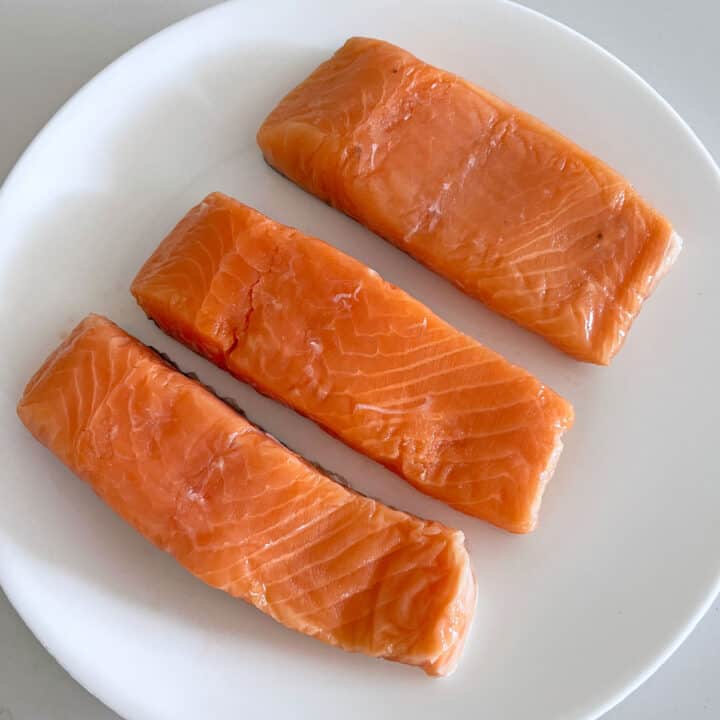
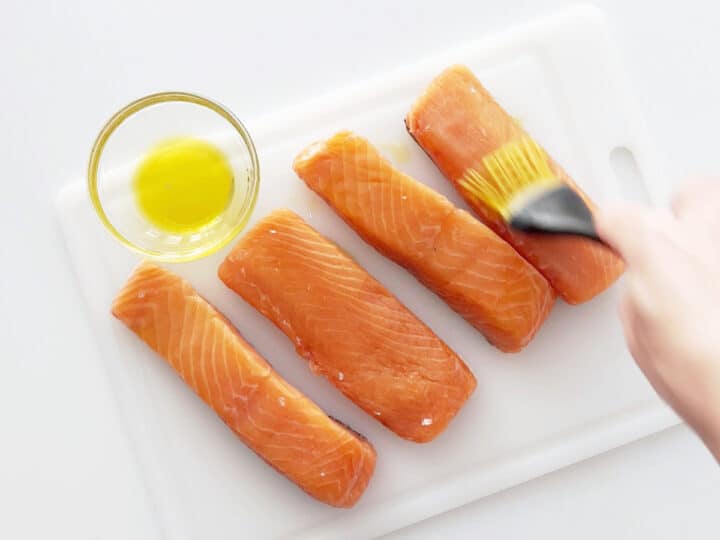
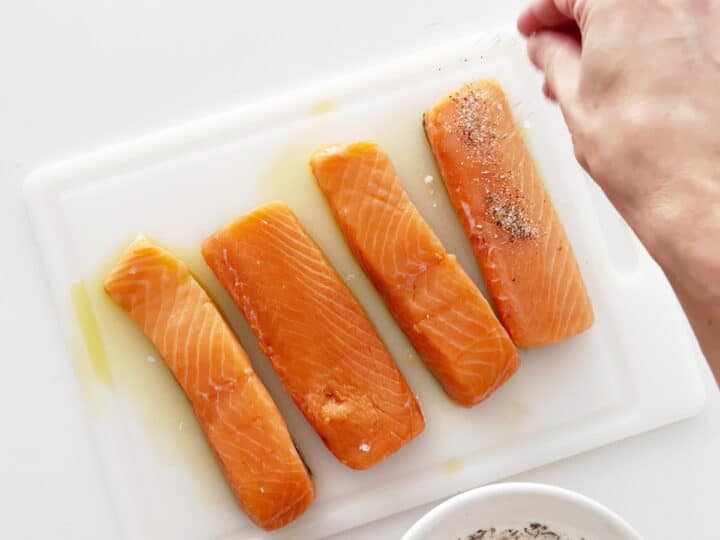
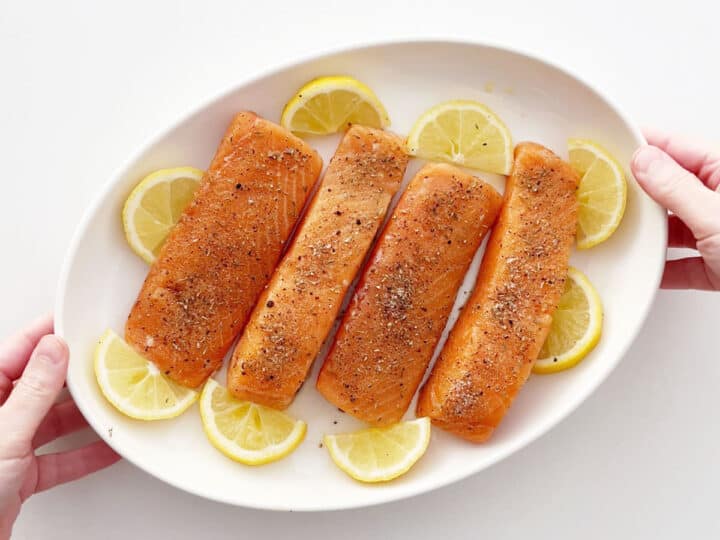
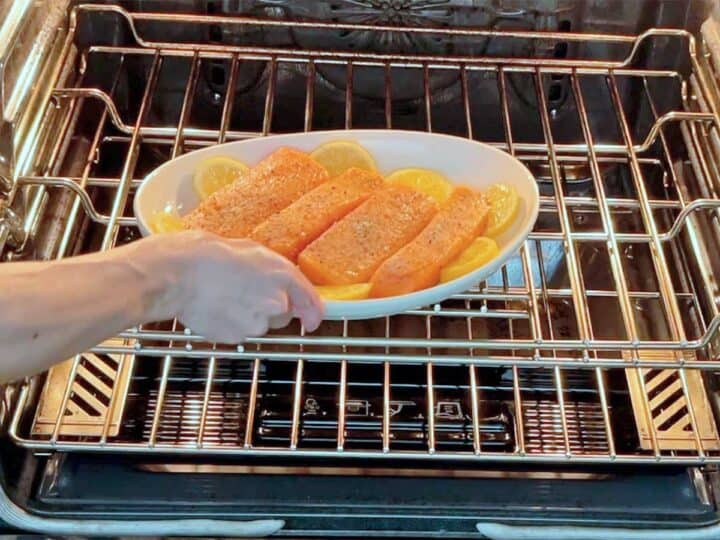
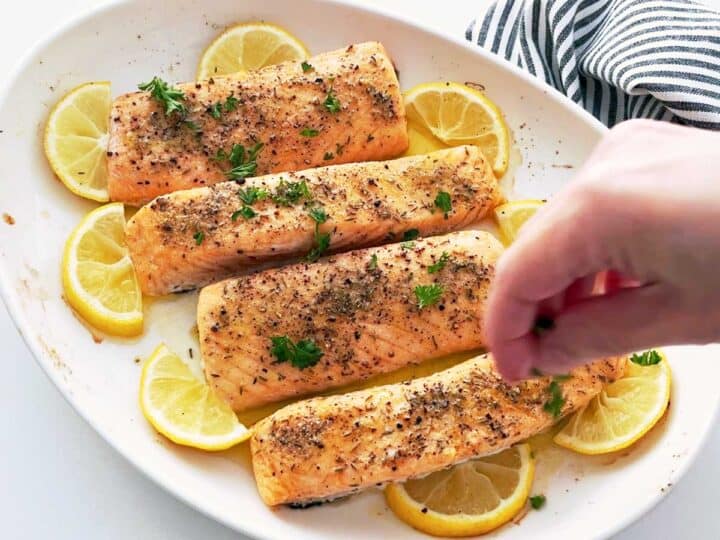
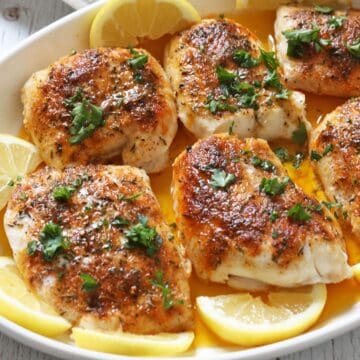
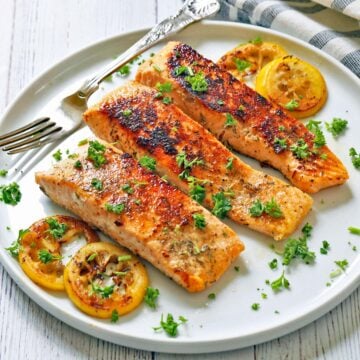
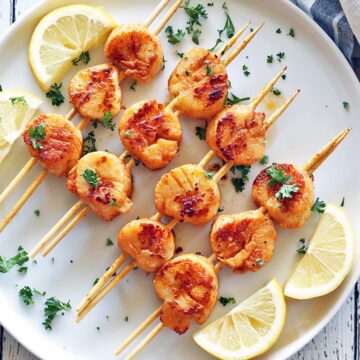

Roy says
Excellent Recipe:
I've always been afraid of cooking Salmon, but this was perfect on the first try. It tasted and looked appetizing as well.
Vered DeLeeuw says
Yay! I'm glad this was a success, Roy!
Elle says
The easiest way to make delicious salmon! I enjoy pan-frying too, but find it much harder to get the perfect internal temperature that way. This produces flaky, delicate salmon with great flavor.
Vered DeLeeuw says
Glad you liked this recipe, Elle! Thanks for the review.
jenny says
Yep, no-fail! I made this recipe tonight and it's definitely a winner in my book.
Vered DeLeeuw says
So glad you enjoyed it, Jenny. 🙂